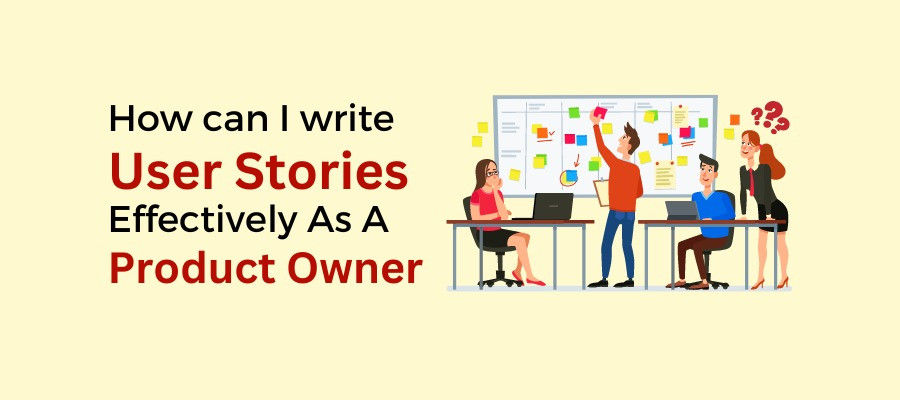How Can I Write User Stories Effectively As A Product Owner?

As a Product Owner, your ability to articulate the end-user requirements is crucial for guiding your Scrum Teams in delivering value. One of the most powerful tools for this purpose is the User Story. It is an informally written general explanation of a product feature from an end-user perspective to articulate how much value it will provide to the customer. So, how have you been writing User Stories? Today, we’ll equip you with the knowledge of writing User Stories more efficiently!
Why Does The PO Write User Stories?
User Stories concisely and understandably encapsulate the overall user requirements for development teams. They provide a common language for the entire Scrum Team and align the end-user expectations with the Product Goal. The other reasons for writing User Stories are as follows:
- Stories maintain user focus, not just task lists.
- Collaboration thrives with clear end goals.
- Creativity flourishes in a problem-solving mindset.
- Momentum grows with each story's completion.
User Stories enable a collaborative approach to product development by breaking down features into user-centric narratives. So, the format must be an effective one!
Main Components Of A User Story:
A well-crafted User Story comprises three essential components: the role, the feature, and the benefit. Let's understand the significance of the following must-have components in User Stories:
- Role: This component defines the user or stakeholder who will interact with the feature. It helps contextualize the User Story and clarifies the perspective being considered.
- Feature: The feature represents the functionality or capability that the user requires. It should be described in clear and actionable language, avoiding technical jargon and focusing on the user's needs.
- Benefit: The benefit articulates the value that the user will derive from the feature. It highlights the problem or pain point the feature addresses and emphasizes its positive impact on the user's experience.
The Basic Structure of a User Story:
A typical User Story follows a simple template known as the "As a [role], I want [feature], so that [benefit]" format. This format provides a framework for capturing the essence of the user's needs and aligning them with the overarching project goals. Let's explore this template further:
As a [role]: This section identifies the user or stakeholder benefitting from the feature. It helps establish empathy and understanding of the user's perspective.
I want [feature]: The desired functionality or capability is articulated clearly and concisely. It should focus on what the user needs to accomplish rather than how it will be implemented.
So that [benefit]: This part elucidates the value proposition of the feature by describing the specific benefit or outcome that the user expects to achieve. It provides context and rationale for the requested functionality.
Example User Story:
As a registered user, I want to reset my password to regain access to my account if I forget it.
Step-Wise Instructions To Write User Stories:
- Start with the User Story voice: "As a [user role], I want to [action], so that [benefit]."
- Provide a detailed description, answering the "Why?" question.
- Include in-depth function description and technical requirements.
- Clarify design requirements for better understanding.
- Address out-of-scope questions from developers concisely.
- Remember Acceptance Criteria; it's crucial for evaluating completion.
Best Practices for Writing User Stories:
As a Certified Scrum Product Owner, you can consider these best practices to write User Stories effectively:
- Keep it concise: User Stories should be brief and to the point, capturing the essence of the requirement without unnecessary details.
- Focus on user needs: Prioritize user-centric language and emphasize the user's goals and objectives.
- Maintain a prioritized backlog: Organize User Stories in a prioritized Product Backlog based on business value and stakeholder needs.
- Collaborate with stakeholders: Engage stakeholders in the User story-writing process to ensure alignment and consensus on requirements.
- Use Acceptance Criteria: Define clear Acceptance Criteria for each User Story to facilitate effective testing and validation.
Can You Now Create Effective User Stories For Your Team?
Mastering the art of writing User Stories is essential for Product Owners seeking to drive successful Agile product development initiatives. By understanding the components of a User Story and adhering to best practices, Product Owners can effectively communicate requirements and deliver value to end-users. Embrace the power of User Stories as a Product Owner, and watch your Agile projects thrive!
Reference:
https://www.atlassian.com/agile/project-management/user-stories
https://medium.com/agileinsider/tips-tricks-for-writing-user-stories-like-a-pro-product-owner-guide-part-ii-fc9fa0c6538a



